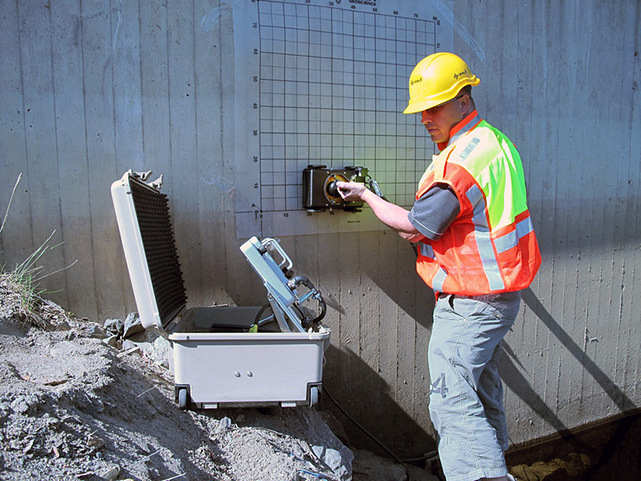Precision and Accuracy in Concrete Scanning Solutions
Precision and Accuracy in Concrete Scanning Solutions
Blog Article
Past the Surface: Leveraging Advanced Concrete Scanning Techniques for Unmatched Accuracy and Understanding
In the world of building and construction and infrastructure maintenance, the mission for precision and thoroughness is incessant. Advanced concrete scanning methods have emerged as essential tools in this quest, supplying a peek underneath the surface to introduce a world of critical understandings. By using sophisticated technologies, experts can reveal anomalies, analyze the problem of concrete frameworks, and make informed decisions that form the training course of projects. The effects of these techniques prolong far past simple surface-level analyses, guaranteeing a deepness of precision and understanding that is exceptional.
Significance of Advanced Concrete Scanning
The significance of utilizing sophisticated concrete scanning strategies lies in the unparalleled precision they supply for finding sub-surface anomalies and making certain structural stability. By using cutting-edge technologies such as ground-penetrating radar (GPR), electro-magnetic induction, and advanced sonar imaging, construction professionals can dig beneath the surface area of concrete frameworks with a level of accuracy that far goes beyond typical inspection techniques. Concrete Scanning. These strategies allow the identification of hidden threats like rebar corrosion, gaps, channels, or post-tension cables that might compromise the security and security of a framework over time
Additionally, advanced concrete scanning offers very useful insights into the general problem of a concrete element without the demand for intrusive measures, decreasing the danger of triggering damage during the evaluation procedure. The capacity to identify the precise place and depth of possible issues permits for targeted repairs and maintenance, ultimately prolonging the lifespan of the structure and maximizing its performance. In essence, the importance of innovative concrete scanning can not be overemphasized in the realm of construction and framework maintenance, where accuracy and reliability are paramount.
Sorts Of Cutting-Edge Technologies

Abnormalities and Issue Discovery

In addition to GPR, concrete scanning methods like thermography and impact-echo screening are additionally effective in finding anomalies and defects. By leveraging these sophisticated methods, professionals can proactively attend to architectural issues, making sure the durability and safety of concrete structures.
Assessing Concrete Condition
Exactly how can designers precisely assess the problem of concrete frameworks to ensure their long life and security? Assessing the concrete problem is a vital aspect of maintaining framework stability. Different innovative concrete scanning methods are employed for this purpose. Ground-penetrating radar (GPR) is frequently made use of to examine the interior structure of concrete, spotting spaces, splits, and various other abnormalities that might endanger its toughness. Furthermore, impact-echo testing can give understandings into the thickness and stability of concrete components. Ultrasonic pulse speed screening is another important approach for reviewing concrete top quality by determining the speed of acoustic waves with the product.
Furthermore, visual assessment continues to be a fundamental component of concrete problem analysis. Engineers visually check out the surface for indicators you could check here of deterioration, such as spalling, fracturing, or discoloration. Incorporating non-destructive screening methods with aesthetic evaluations enables an extensive assessment of concrete problem, allowing designers to recognize potential issues beforehand and implement timely maintenance or fixings. By leveraging these sophisticated strategies, designers can guarantee the lasting resilience and security of concrete frameworks.
Enhancing Decision-Making Procedures
In the realm of framework monitoring, maximizing decision-making procedures is important for making sure the reliable maintenance and long life of concrete structures. Improved decision-making procedures in concrete management involve utilizing sophisticated scanning methods to gather comprehensive data on the condition of frameworks. By leveraging modern technologies such as ground-penetrating radar and 3D imaging, stakeholders can make educated choices regarding repair work, substitute, or reinforcement methods.
These progressed scanning strategies supply vital understandings right into the interior composition of concrete, determining prospective issues such as gaps, splits, or deterioration that might not show up externally. This degree of in-depth details permits proactive maintenance preparation, lessening the threat of architectural failings and increasing the general life-span of concrete structures.
In addition, by integrating digital documents and evaluation tools into the decision-making procedure, stakeholders can track the advancement of concrete conditions in time, making it possible for predictive maintenance techniques and enhancing resource appropriation. Ultimately, the integration of sophisticated concrete scanning techniques boosts decision-making processes by offering unequaled accuracy, understanding, and effectiveness in infrastructure monitoring.
Verdict
In final thought, progressed concrete scanning strategies supply unmatched accuracy and insight in discovering anomalies, defects, and analyzing the problem of concrete frameworks. By leveraging innovative innovations, decision-making processes can be enhanced, resulting in more educated and reliable remedies for preserving and repairing concrete framework. These strategies play an important role in ensuring the safety and longevity of concrete frameworks, making them a crucial tool in the field of building and construction and design.
Moreover, progressed concrete scanning supplies vital understandings into the general condition of a concrete element without the demand for intrusive procedures, reducing the danger of triggering damages throughout the analysis process - Concrete Scanning. An additional cutting-edge technology is 3D X-ray scanning, which supplies in-depth pictures of the interior framework of concrete, using important details without the requirement for harmful testing. In Addition, Concrete Cover Meters are made use of to determine the density of concrete cover over support bars accurately. Boosted decision-making processes in concrete administration entail using advanced scanning strategies to gather comprehensive information on the problem of frameworks.In conclusion, progressed concrete scanning techniques supply unequaled precision and insight in identifying abnormalities, issues, and evaluating the problem of concrete structures
Report this page